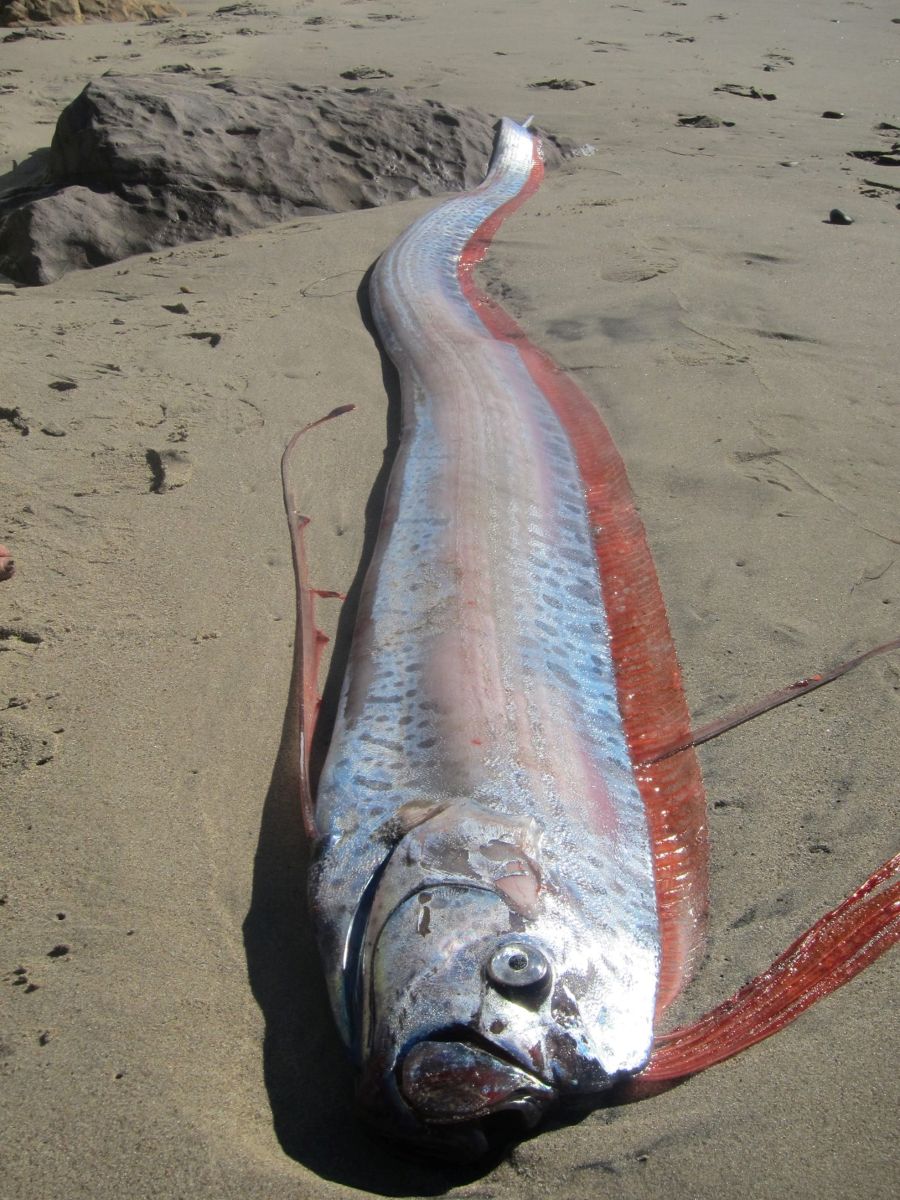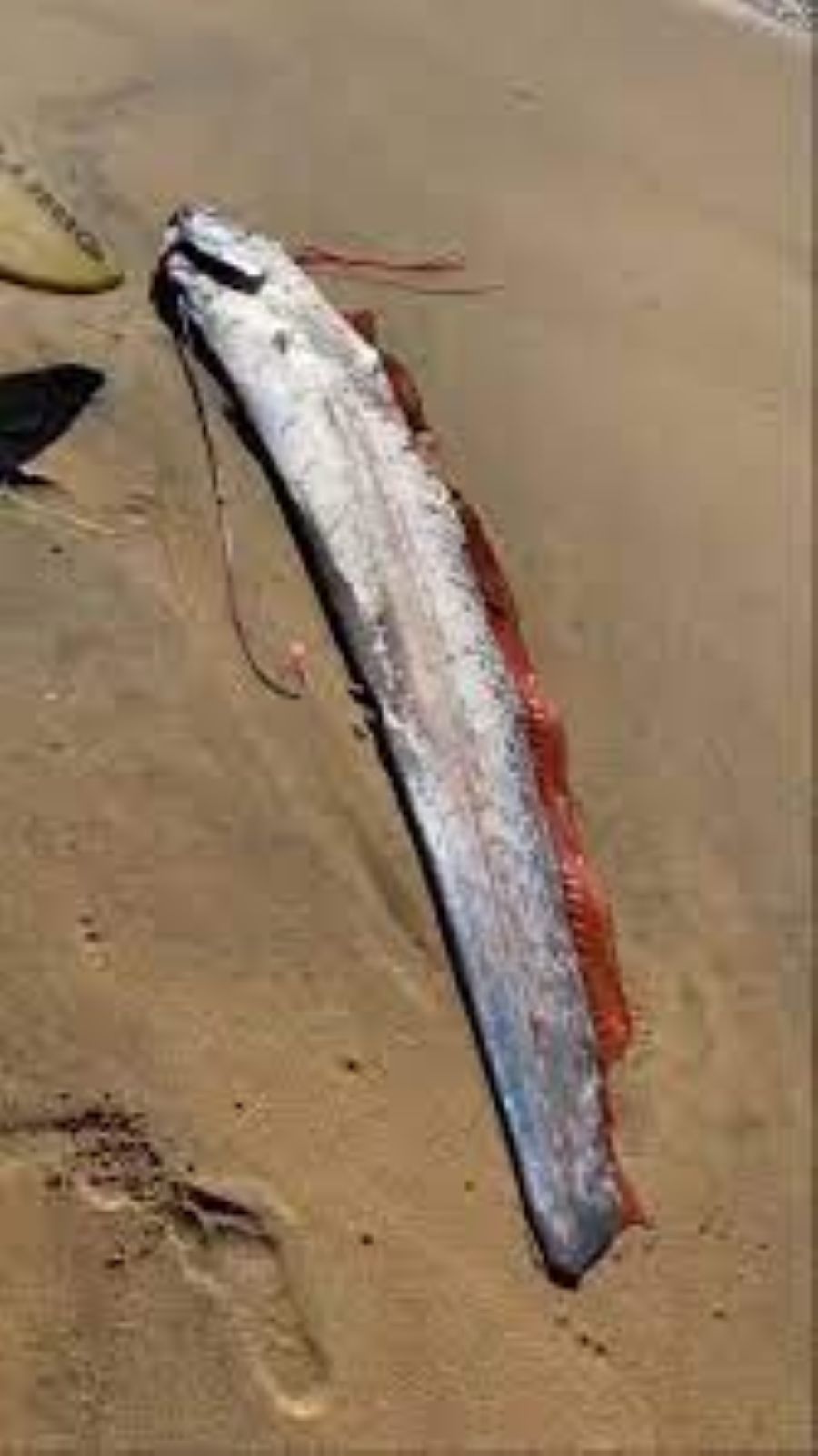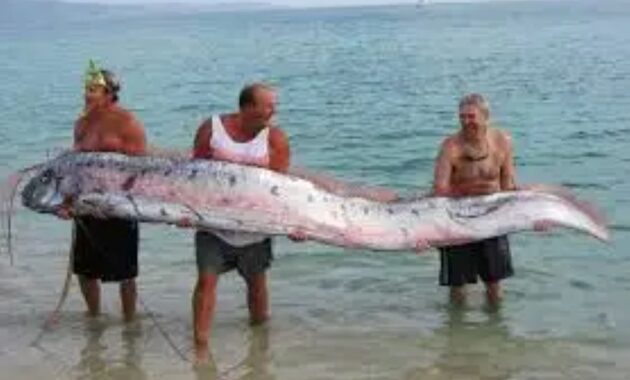Have you ever wondered what real sea monsters look like? The creature in this photograph isn’t from a science fiction movie – it’s a genuine giant oarfish that washed up on a beach. These incredible animals remain one of the ocean’s greatest mysteries, rarely seen by human eyes.

What Is This Strange Fish?
The giant oarfish (Regalecus glesne) is the world’s longest bony fish, growing up to 36 feet long – about the length of a school bus! The specimen in the photo shows its most distinctive features: the silvery, ribbon-shaped body, large eyes, and bright red dorsal fin that runs along its entire back like a mohawk haircut.
Most people will never see an oarfish in their lifetime. These deep-sea dwellers typically live between 660-3,300 feet underwater, far beyond where humans normally venture. They only come to shallow water or wash ashore when they’re sick, injured, or dying.
Why Are Oarfish So Famous?
When sailors throughout history reported seeing “sea serpents,” they were likely spotting oarfish. These fish swim in a vertical position, with their head up, making their long bodies undulate through water like giant snakes. This unusual movement, combined with their massive size, created the perfect recipe for sea monster legends around the world.
In Japan, oarfish are called “Ryugu no tsukai” or “messenger from the sea god’s palace.” Some believe their appearance in shallow waters predicts earthquakes, though scientists haven’t found solid evidence for this connection.

Amazing Oarfish Facts
- They can weigh up to 600 pounds
- They have no teeth and feed by filtering small creatures from the water
- Their skeleton is made of soft cartilage, not hard bone
- Baby oarfish look completely different from adults, with star-like patterns and spines
- Scientists have never observed oarfish mating or giving birth
- They have over 400 dorsal fin rays creating their distinctive red crest
Why Do Oarfish Wash Ashore?
Finding an oarfish on the beach like the one pictured is extremely rare. These fragile giants aren’t built for the rough conditions of shallow water. Their soft bodies easily damage in strong currents. When they appear on beaches, researchers rush to study them, as each specimen provides valuable scientific information about these mysterious creatures.
Scientists believe oarfish may wash ashore due to:
- Illness or injury
- Being caught in strong currents
- Following prey into unfamiliar waters
- Being disoriented by underwater disturbances
What Do Oarfish Eat?
Despite their massive size, oarfish have surprisingly tiny mouths. They feed mainly on krill, small shrimp, and tiny squid, sucking them in as they drift through the water. They don’t hunt like predatory fish – instead, they filter their meals from the surrounding water.
Are Oarfish Dangerous?
Not at all! Despite their serpent-like appearance, oarfish are completely harmless to humans. They have no teeth, no stinging spines, and no aggressive behavior. If you were somehow to encounter a living oarfish underwater (which would be incredibly rare), it would likely be more afraid of you than you of it.

The Mystery Continues
Each oarfish discovery, like the specimen in this photograph, adds another piece to the puzzle of these enigmatic creatures. Marine biologists eagerly study their tissue samples, stomach contents, and genetic material to learn more about their life cycles, breeding habits, and evolutionary history.
The next time you visit the ocean, remember that beneath those waves swim creatures that seem straight out of fantasy – living sea serpents that continue to captivate our imagination and remind us how much of our ocean world remains unexplored.
While you may never spot a giant oarfish yourself, knowing these remarkable animals exist makes our oceans even more magical and mysterious than we imagined.
